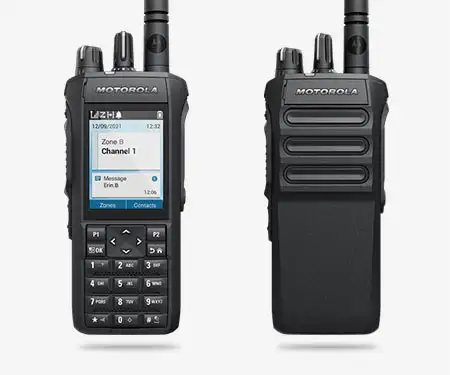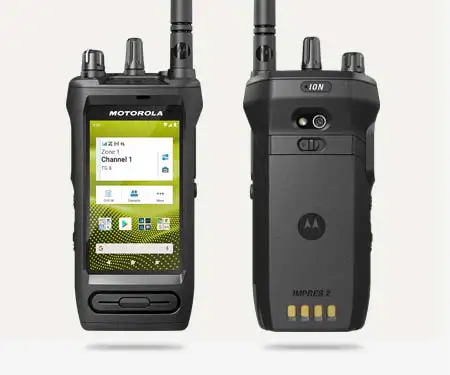Call Us Today
(800) 288-4505
Phoenix, AZ
(602) 275-4505
Salt Lake City, UT
(801) 901-8888
Houston, TX
(713) 804-2125
Call Us Today
(800) 288-4505
Phoenix, AZ
(602) 275-4505
Salt Lake City, UT
(801) 901-8888
Houston, TX
(713) 804-2125


Be heard, loud and clear with game-changing audio capabilities in a rugged, future-ready device. more...
When properly equipped with a Motorola intrinsically safe battery for the R7 Series, HazLoc certified TIA 4950 as intrinsically safe for use in Class I, II, III, Division 1, Groups C, D, E, F, G, Division 2, Groups A, B, C, D. See below for further explanation.

Business-ready communication device with all-on voice and broadband data capabilities. more...
When properly equipped with a Motorola intrinsically safe battery for the Ion, UL Approved to TIA-4950 for use in Hazardous Locations, Division 1, Class I, II, III, Groups C, D, E, F, G; Division 2, Class 1, Groups A, B, C, D. See below for further explanation.

High-performance integrated voice and data, and advanced features for efficient operation. more...
When properly equipped with a Motorola intrinsically safe battery for the XPR 7000e Series, UL Approved to TIA-4950 for use in Hazardous Locations, Division 1, Class I, II, III, Groups C, D, E, F, G; Division 2, Class 1, Groups A, B, C, D. See below for further explanation.

Cost-effective connectivity with systems support and loud, clear audio for your organization. more...
When properly equipped with a Motorola intrinsically safe battery for the XPR 3000e Series, UL Approved to TIA-4950 for use in Hazardous Locations, Division 1, Class I, II, III, Groups C, D, E, F, G; Division 2, Class 1, Groups A, B, C, D. See below for further explanation.
| Class | Nature of Hazardous Material | Industry Examples |
|---|---|---|
| Class I | Flammable gases, liquids, or vapors. | Oil & Gas Industry Dry Cleaning Plants |
| Class II | Combustible dust. | Plants Using Aluminum / Magnesium / Coal Producers of Chemicals / Medicines Food Industry (Starch / Grain Processing) |
| Class III | Ignitable fibers and flyings. | Saw Mills / Textile Mills / Flax Processing Plants |
| Division | Probability of Hazardous Material |
|---|---|
| Division I | The substance referred to by one of the classes above has a high probability to generate an explosive or ignited mixture under normal operation. |
| Division II | The substance referred to by one of the classes above has a low probability to generate an explosive or ignited mixture under normal operation and is present only during abnormal conditions. |
| Group | Type of Hazardous Material |
|---|---|
| Group A | Acetylene and corresponding gas groups. |
| Group B | Hydrogen and corresponding gas groups. |
| Group C | Ethylene and corresponding gas groups. |
| Group D | Methane and corresponding gas groups. |
| Group E | Conductive dust, produced via mechanical means such as in factories or through the recycling process. |
| Group F | Combustible carbon dust, this applies to above-ground applications only and examples include coke dust and charcoal. |
| Group G | Combustible dust not included in Group E or F, such as flour, grain, starch, sugar, wood, plastics and chemicals. |
NOTE: This is a simplified breakdown of this classification system. We recommend the sources below to learn more about Motorola's switch to the TIA-4950 standard, and more details on how the hazardous location classification system is determined.
MOTOTRBO™ HazLoc Certification FAQ